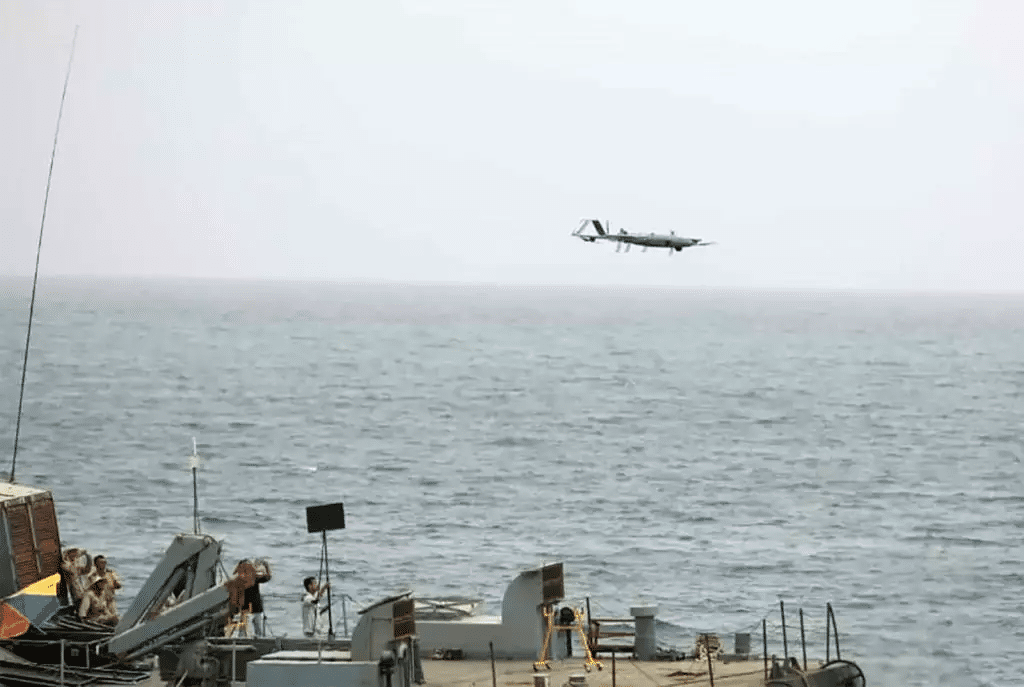The battle for dominance under the sea
Beneath the ocean waves, we transmit gas, oil, electricity, and vast amounts of data. However, hostile nations are increasingly threatening the seabed, prompting a global imperative to consider: how can we safeguard this vital infrastructure.
Nitzan David Fuchs and Makor Rishon
Israel Hayom
Jan 2, 2025
The Yi Peng 3 was present at both damage sites - and was caught
Under the sea, a quiet and dangerous battle is unfolding. In November, two undersea communication cables in the Baltic Sea were severed — one linking Sweden to Lithuania, and the other connecting Finland to Germany. A Chinese cargo vessel, the Yi Peng 3, is suspected of carrying out the sabotage. This incident is just one example of the vulnerability of critical infrastructure essential to our daily lives beneath the waves. The ship reportedly dragged its anchor along the seabed, snapping the cables —not exactly rocket science. Nevertheless, the result was both severe and costly to repair, disrupting communication between the Baltic nations.
Every day, undersea communication cables carry approximately $10 trillion worth of financial transactions worldwide. Every video call with family abroad, every bank transfer, and every streaming session depends on this extensive network of cables lying on the ocean floor. Damage to this network could cripple entire nations. In Lithuania, for example, internet capacity dropped by about one-third after the cables were sabotaged.
These undersea systems aren't just about data. The Baltic seabed hosts a complex network of energy infrastructure, including the Balticconnector gas pipeline between Finland and Estonia, the Baltic Pipe transporting gas from the North Sea via Denmark to Poland, and the NordBalt and Estlink power cables connecting Sweden and Finland to the Baltic states. These systems are critical to European efforts to reduce reliance on Russian energy, enabling Finland to link to the European power grid and allowing Norway's natural gas to flow to the continent. Any damage to this infrastructure would send shockwaves across Europe.

An increasing number of nations view the undersea domain as both a battlefield and a critical area requiring protection. Yet safeguarding these systems presents unprecedented technological challenges. How can infrastructure located kilometers beneath the sea be monitored continuously? And when threats are detected, how can they be addressed swiftly and effectively?

Data is transmitted through internet cables
Countries are exploring various solutions to these challenges. The UK recently invested in a specialized vessel equipped with advanced monitoring systems, including autonomous tools to oversee its communication, gas, and oil pipelines. NATO is driving innovation in sensor technology and unmanned vessels to enhance the detection of suspicious activity. Meanwhile, the US is developing solar-powered unmanned submarines to patrol strategic areas in East Asia and other key regions.
As time goes on, the importance of the undersea will only grow. Ambitious plans for intercontinental power cables, underwater mining, and the expansion of the global communication network will make protecting this infrastructure even more crucial. Israel, for example, is eyeing a connection to Europe through a submarine power cable.
The struggle for dominance in under the sea will remain one of the great challenges of this century, even if much of the public remains unaware of the battle unfolding beneath the waves.


No comments:
Post a Comment